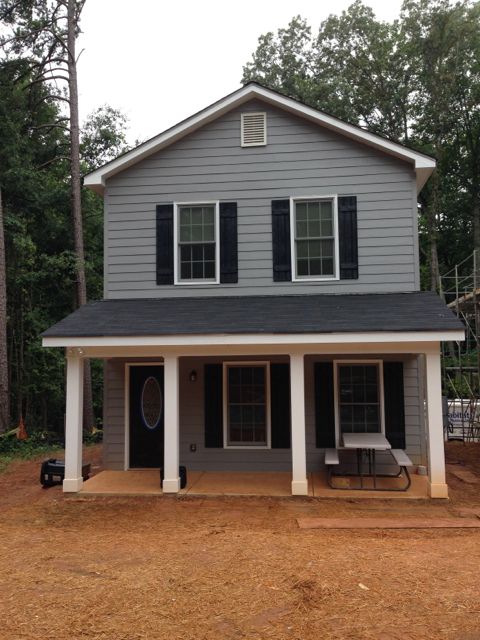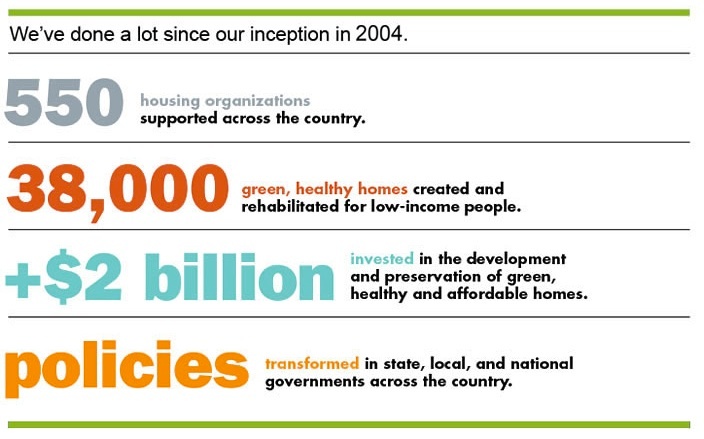Enterprise Green Communities — The Best Program You’ve Never Heard of

The best green building program you’ve never heard of is probably Enterprise Green Communities. Everyone knows about LEED, of course. Regional programs, such as EarthCraft House and Minnesota GreenStar, also have name recognition in their areas. But unless you’ve been involved with Enterprise Green Communities, you may not have even heard of it. The recent release of their new program criteria means that it’s time for that lack of name recognition to change.
The best green building program you’ve never heard of is probably Enterprise Green Communities. Everyone knows about LEED, of course. Regional programs, such as EarthCraft House and Minnesota GreenStar, also have name recognition in their areas. But unless you’ve been involved with Enterprise Green Communities, you may not have even heard of it. The recent release of their new program criteria means that it’s time for that lack of name recognition to change.
About Enterprise Green Communities
The big focus of Enterprise Green Communities is on affordable housing. According to their website, “We developed our Enterprise Green Communities Criteria to bring the improved health, economic and environmental benefits of sustainable construction practices to low-income families.”
They began in 2004, and the graphic below shows how far they’ve reached during the past 11 years.

The 2015 Criteria
This year, Enterprise Green Communities introduced their new criteria, a major update from the 2011 guidelines. You can download the full pdf from their website. As I’ve looked over the criteria, I’ve been impressed. They put together a great team to decide what to include and how to implement the criteria. The technical working group, for example, includes some names that may be familiar to readers here: Alex Wilson, Peter Yost, and Terry Brennan, among others.
The program, like most others, includes mandatory requirements and points for optional items. To qualify, a project has to do all of the former and get 30 or 35 of the optional points, depending on the type of project (new or rehab).
The requirements and options are spread across the following 8 categories:
- Integrative Design
- Location + Neighborhood Fabric
- Site Improvements
- Water Conservation
- Energy Efficiency
- Materials
- Healthy Living Environment
- Operations, Maintenance + Resident Engagement
Each of those categories is fleshed out pretty well, too. In number 7, for example, they cover ventilation, garage isolation, radon, dryer exhaust, and much more. Download the criteria and see for yourself.
Passive House gets points!
I’d like to close by drawing your attention to the optional item that gives points for Passive House certification (and Living Building Challenge and Zero Energy Ready Homes, too). If you look at item 5.2b, you’ll see this:
REQUIREMENTS
Certify the project in a program that requires advanced levels of building envelope performance such as PHIUS, Living Building Challenge and/or DOE Zero Energy Ready Home.
RATIONALE
These complementary whole building certification programs emphasize strategies that aggressively reduce whole building energy loads, reducing the need to heat and cool, reducing utility bills, reducing associated greenhouse gas emissions, and increasing project capacity to sustain habitability during loss of power.
RECOMMENDATIONS
Each of these programs requires a significant commitment to ensure significant levels of project performance. Begin strategizing how to achieve your project goals through dual certification with these programs as early in the integrative design process as possible.
That’s a nice way to recognize that building or renovating to Passive House standards will get you a really good house that provides the healthfulness, comfort, and low energy bills that will make the home affordable to live in.
If you’ve never heard of Enterprise Green Communities before, I hope you’ll check it out. Everyone knows about the LEED green building program and Habitat for Humanity for affordable housing, but Enterprise deserves some major props for what they’ve accomplished since 2004. The new criteria are likely to take them to a whole new level.
Related Articles
The Department of Energy Makes a Choice in the Net Zero Debate
10 Essential Steps to Building a Pretty Good House
Habitat for Humanity Leads the Way to Affordable, Green Homes
NOTE: Comments are moderated. Your comment will not appear below until approved.
